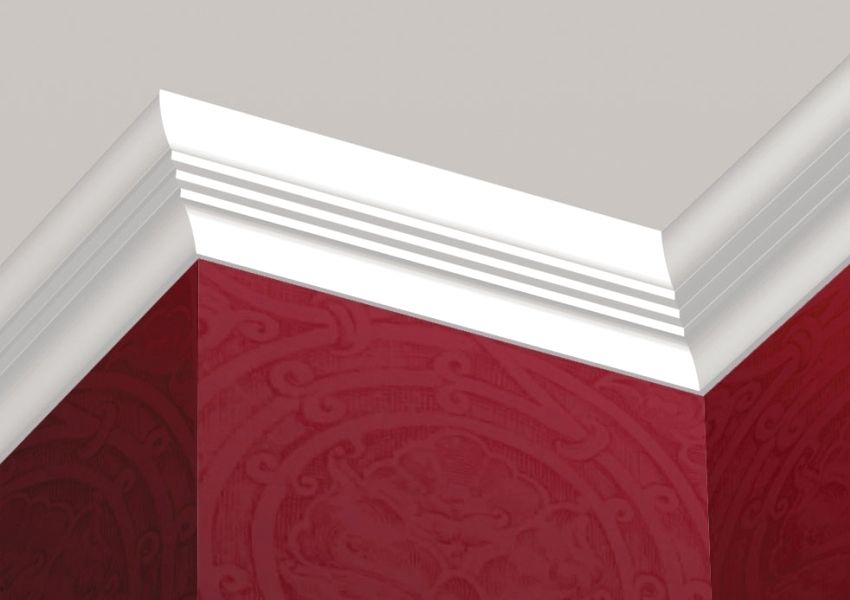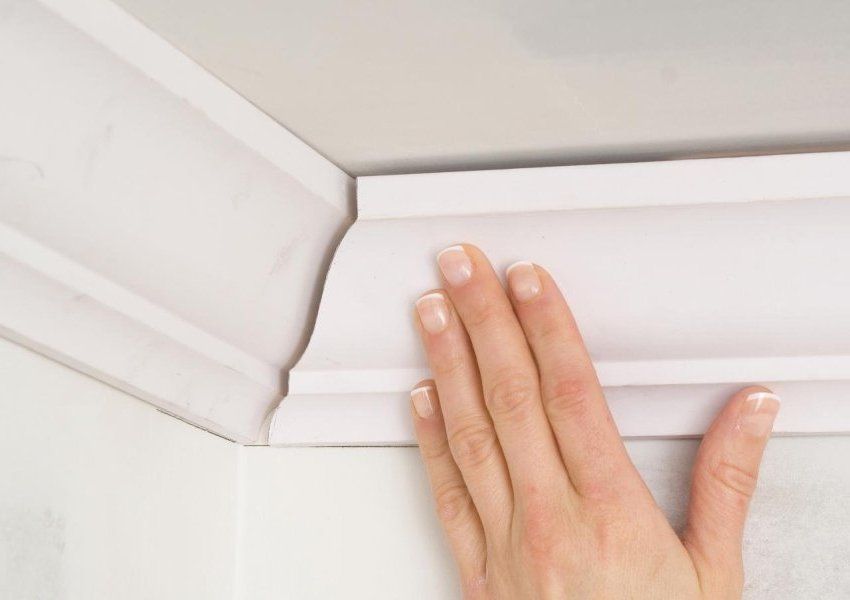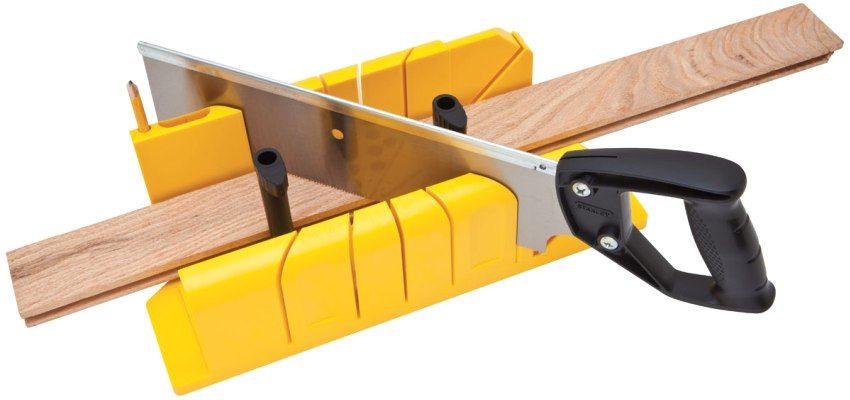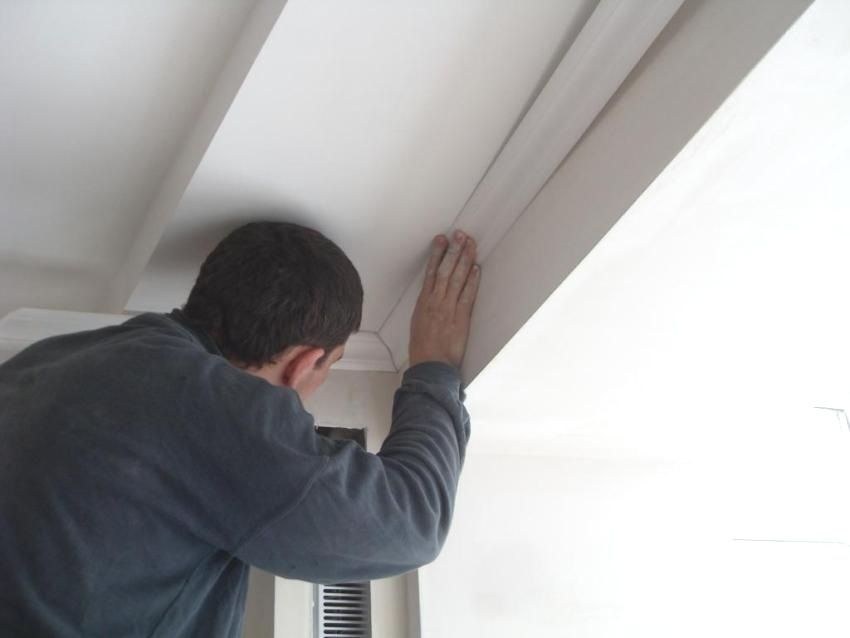In addition to the main repairs, such as wall and ceiling finishing, we have to face some minor difficulties, such as, for example, the design of the joints between these two surfaces. For this purpose, ideal decorative ceiling polyurethane skirting. Consider the features of the choice of this practical element, as well as recommendations for its independent installation.

Types of plinths on the ceiling: photos of decorative elements from different materials
In order to understand how polyurethane ceiling cornice favorably differs from all other options, consider what they are, depending on the material of manufacture.

Wooden plinth has become widespread due to the availability of the material, as well as the possibility of fixing in various ways: with glue, with screws or nails. Most often, such decorative elements are used in interiors where wood decoration prevails.
Gypsum plinth is one of the most beautiful, but at the same time, not cheap options for finishing the joints between the ceiling and the wall. The width, as well as the variety of stucco, is practically unlimited, and therefore it is not difficult to choose an option that is suitable for any interior design. Fastening is done with putty. In some cases, such plinths are additionally stained.
Foam ceiling plinth – the cheapest of all the options on the market. It is popular for its accessibility, low weight, as well as an extremely simple method of fastening: with the help of a special adhesive that is sold in any hardware store, as well as putty. Available in sizes from 2 m in length and from 6 to 10 mm in width.

Ceiling filament polyurethane superiority due to its special flexibility. This property allows you to design any complex structures, where there are smooth transition lines, as well as columns. And if earlier for this purpose it was necessary to use plaster plinths, producing an extremely difficult fit of elements, now this process has become much easier, thanks to the plasticity and the ability of polyurethane to bend around any shape. The possibilities offered by the use of this material in interior design are almost endless.
Helpful advice! Despite the fact that polyurethane skirting looks great in combination with almost any finishing material, it is especially often used when the decoration is made with a vinyl stretch ceiling, tiles or plastic panels.
Buy ceiling plinth from polyurethane costs for many reasons. Possessing a number of advantages, it can become an indispensable assistant in the design of the original interiors, giving the room a finished look. Consider a few basic advantages of using this variant of the name:
- the polymer, which is used for the manufacture of plinth, has a high density and resistance to various exposure factors;

- chemical safety of this material has also been repeatedly confirmed;
- high flexibility allows you to design rooms with a complex configuration and use the plinth to finish the designs of the most varying complexity;
- such a cornice can be used not only for the ceiling, but also for the design of door and window openings;
- the snow-white color of the fillet is ideal for any interior, but at the same time its surface can be painted in any shade that will match the color of the walls or ceiling, depending on your preferences;
- it is possible to decorate the cornice with lighting, and thus bring something original into the interior, and use it as an additional source of lighting in the future.
Helpful advice! You can buy a ready-made design of the eaves, equipped with lighting, and you can do everything with your own hands. Thus, you will perfectly decorate the room and can even change its visual perception.

The profitability of using polyurethane ceiling plinth is beyond doubt, especially since this material has a lot of technical superiority over the others, for example, the ability to withstand severe temperature drops: from -60 to 80 ° C. This is the reason for the extremely long lifetime of the material.
For fixing this type of plinth it is easiest to use polymer glue, applying it on the edges of the profile. In this case, the main requirement that is presented in this case to the adhesive mixture is a high level of seizure. This simplifies the task, since the ability to quickly freeze allows you to fix the elements quickly and eliminates the need to hold the baseboard for a long time, because it is rather difficult to stand with your hands up even for a few minutes.
At the same time, the use of such fast-drying compositions complicates the work, as it requires accuracy and speed in the work, leaving you no room for error and improper placement of the eaves. The ideal option for the adhesive mixture for fixing can be Moment glue or liquid nails.

In order to smoothly and beautifully cut the corners of a flexible plinth, use a special device, which is called a sole. It has several holes that allow you to accurately measure the angles of 45, 60, 67.5 or 90 degrees. If you want to make a direct docking, you must use a stencil 90 degrees. But to trim the inner and outer corners most often used angle of 45 degrees.
Let us consider in detail step-by-step instructions for trimming the corners of a flexible plinth:
- First of all, the element that you want to cut should be inserted into the box on the left side and pressed to the side. At the same time, the part that will be located near the ceiling should be located in the lower part of the molded metal;
- a hacksaw is inserted into the stencil 45 degrees on the right side;
- if we are talking about trimming an adjacent profile, then the plinth should be inserted on the right, and the trimming should be carried out from right to left. Thus it turns out that the upper side for the lower corner will be longer than the lower one.
In cases where you need to fit the inside corner, insert the plinth into the trunk should be on the left side, and trim the edge in the direction from right to left at an angle of 45 degrees. Then the bottom side will be longer than the top.

Helpful advice! In order to avoid mistakes and unnecessary consumption of material, before starting work it is recommended to watch the video, how to cut corners on the ceiling plinths. Such a simple video instruction clearly shows you all the stages of work.
Often we have to deal with the problem of the lack of the necessary tools, namely the mousse. In this case, you can go a different way and do everything manually: on a flat surface (most often just on the table), two parallel lines are drawn. In them the square is marked. From the corners of this square are diagonals that form angles of 45 degrees.
In order to make pruning easier, and the accuracy was higher, you can use the objects at hand, for example, put a box or a wooden bar on a diagonal line.
Another difficult case that you often come across is an uneven angle that does not have a 90 degree position. In this case, the use of stencils is meaningless, since the elements you received will still not lie flat under the ceiling. In such a situation, it is necessary to take into account the peculiarities of each corner separately, and to make markings on the ceiling.

The flexible plinth for the ceiling is applied directly to the place where it will be fixed, resting it against the adjoining wall. On the ceiling and wall, you need to draw lines that mark the places of contact of the eaves to the surfaces. The same is repeated for the adjacent wall of the room. The upper point of intersection of these lines will be the cut point, and the lower point of intersection of the lines is the lower corner of the profile.
To make the outer corner of the ceiling plinth, as in other cases, you need to use the method of parallel lines or miter box. That’s just the direction of the cut will be different.
Helpful advice! If you do not want to figure out on your own how to make a corner on the ceiling plinth, you can buy corners for the ceiling plinth, which are sold in the store. They cost quite cheap, but the installation process can be much easier.
Another issue worthy of attention is how to cut the baseboards at the corners of the ceiling. Despite the fact that polyurethane lends itself well to cutting, it also requires some caution when working with it. For this purpose, it is best to use a hacksaw or a construction knife, with the help of which it is easy to trim irregularities and protruding pieces.

To make the trimming angle as accurate as possible, try to position the profile as flat as possible into the trunk so that the width of the plinth on the bottom and on the side is as much as possible.
If you have to cut manually, without using the body, then try to distribute the baseboard so that it is evenly spaced both vertically and horizontally. In this case, you get the highest quality joint, without gaps and gaps.
As you can see, there is nothing difficult in self-cutting profiles, and it is quite possible to do everything on your own, without any help. Moreover, as a visual material you can always use the video, how to make a corner on the ceiling plinth.
It would seem that there is no need to understand how to glue the skirting board to the ceiling, because by purchasing a ready-made adhesive compound, you almost completely relieve yourself of the associated troubles. In fact, there are quite a few subtleties that must be taken into account in the process of work in order to mount correctly.

Of course, it is easy to glue the profile on a perfectly flat and smooth surface. But what if the walls are not smooth, or how to glue the ceiling plinth on the wallpaper? Consider all this in step-by-step instructions.
The first step is to prepare the surface for fastening the fillet. This requires a thorough cleaning, removing all roughness, glue residue and so on. For this purpose, you can use a spatula, fine sandpaper or a mesh, designed to grout putty.
Helpful advice! If earlier the joint between the wall and the ceiling was puttied, before proceeding to the installation of the ceiling plinth, the surface must be treated with a primer and wait until it is completely dry.
Always mount to start in the corners. How to glue the plinth to the ceiling and trim the required angles, was considered earlier. All other elements are simply adjusted to the required size.

Not so important, what glue to glue the ceiling plinth. Moment and liquid nails will do. The main thing is not to apply too much of it so that the protruding surpluses do not stain the outer surface of the eaves, since due to the quick setting of the composition, it will be quite difficult to remove it, and the use of household chemicals in this case is unacceptable. It is usually recommended to apply the composition dottedly and only in the middle of the product, and the technological gap, which remains as a result, should be sealed with a special sealant that will harmonize in color.
Having figured out how to glue the ceiling plinth in the corners, it remains only to fill the space between them. To do this, use the same technology. All that is needed is to measure the required size and cut the elements accordingly. A small amount of glue is applied to the middle of the backing surface, after which the part is applied to the wall and held in this position for a few seconds.

